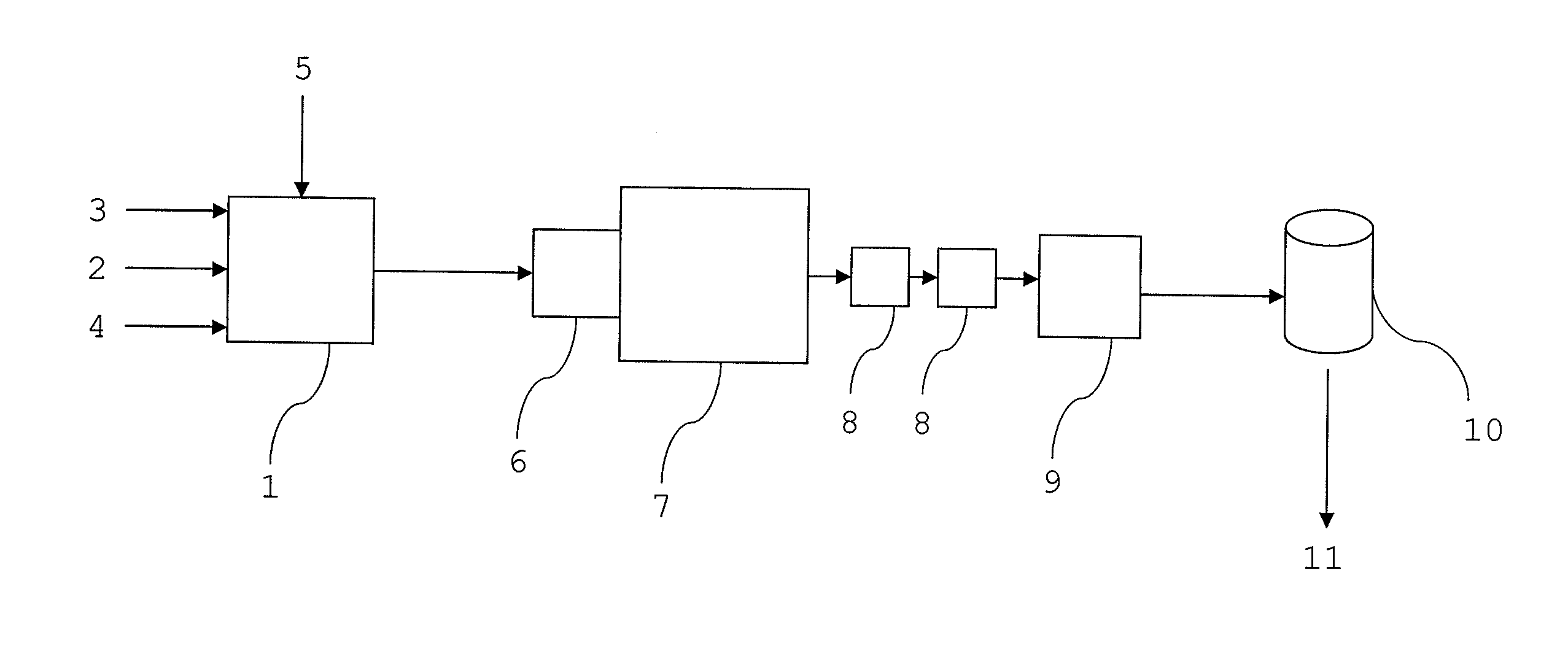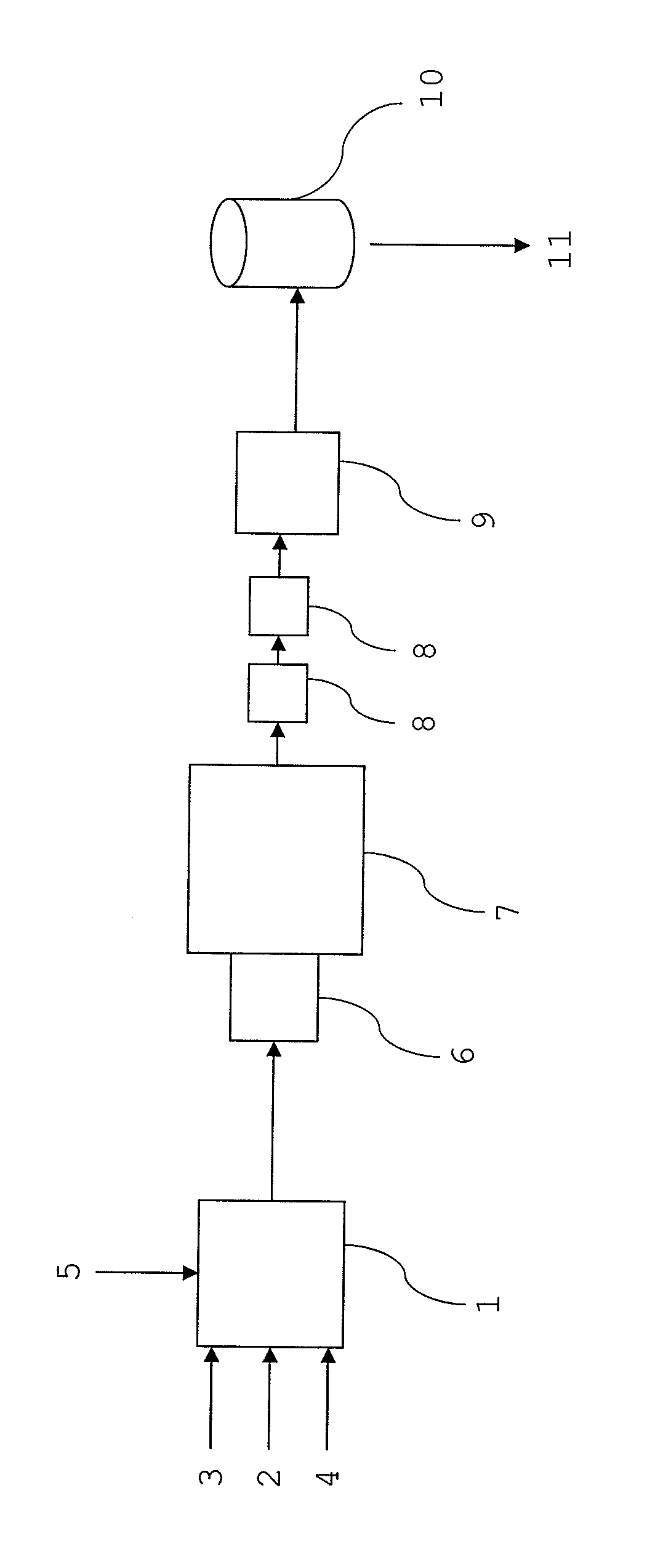Composite intermediate, method for forming same, and use of the composite intermediate
a composite intermediate and intermediate technology, applied in the field of composite intermediates, can solve the problems of low compatibilizing agent effect, product reagglomeration, and inability to open bonding in the process, so as to improve compatibility and adhesion, improve the effect of compatibility and adhesion and reduce the reagglomeration of natural fibers
- Summary
- Abstract
- Description
- Claims
- Application Information
AI Technical Summary
Benefits of technology
Problems solved by technology
Method used
Image
Examples
Embodiment Construction
[0043]In the following, the invention will be described using a detailed example of an embodiment with reference to the accompanying drawing.
[0044]The apparatus according to FIG. 1 includes a mixing tank 1 to form a liquid mixture. The mixing tank 1 includes feeding means to add natural fiber 2, plastic 3, liquid 4 and a compatibilizing agent, i.e. an adhesion agent 5, to the tank. In addition, the mixing tank includes mixing means (not shown in the FIGURE) to mix the liquid mixture. Furthermore, the apparatus includes a fourdrinier machine with the headbox 6 and the wire section 7 to form a web from the liquid mixture. In addition, the apparatus includes two presses 8 and a drying section 9 to dry the resulting web. The device components used in the apparatus are completely known per se in the field of papermaking and are not described in more detail herein.
[0045]In this example, a composite web was formed by the apparatus according to FIG. 1 from lignin-free chemical pulp fibers a...
PUM
| Property | Measurement | Unit |
|---|---|---|
| diameter | aaaaa | aaaaa |
| diameter | aaaaa | aaaaa |
| adhesion | aaaaa | aaaaa |
Abstract
Description
Claims
Application Information
 Login to View More
Login to View More - R&D
- Intellectual Property
- Life Sciences
- Materials
- Tech Scout
- Unparalleled Data Quality
- Higher Quality Content
- 60% Fewer Hallucinations
Browse by: Latest US Patents, China's latest patents, Technical Efficacy Thesaurus, Application Domain, Technology Topic, Popular Technical Reports.
© 2025 PatSnap. All rights reserved.Legal|Privacy policy|Modern Slavery Act Transparency Statement|Sitemap|About US| Contact US: help@patsnap.com


